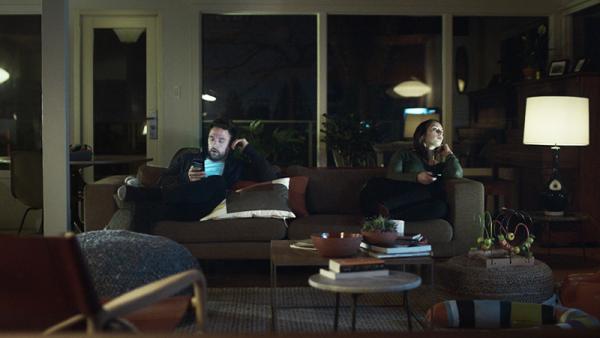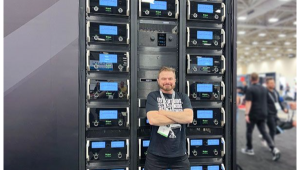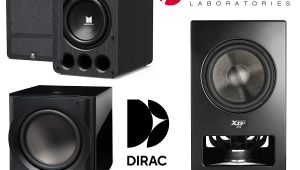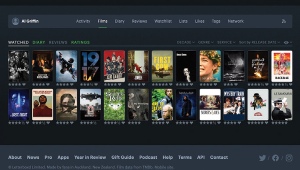Are You the Victim of a Silent Home?

The company best known for its wireless multiroom audio products conducted a worldwide study in 2015 with the assistance of experts including Daniel J. Levitin, a noted neuroscientist and author of the bestseller "This Is Your Brain On Music," wherein they determined that listening to music out loud with family members greatly enhances quality of life, facilitating families to spend more time together, to express warmer feelings toward one another, and, yes, to do that, um, nooky thing more often.
But additional follow-up research last year revealed a disturbing trend: After surveying 9,000 homes in nine countries, Sonos found that about 2/3 are suffering in what the company calls "The Silent Home" — in essence, a home without any active shared music space or where that space goes largely unused.
Their response is a new marketing campaign, debuted in a commercial broadcast during the recent Grammy awards show, to "Wake Up the Silent Home." In the commercial, we see views into the windows of apartments and homes at night and secretly observe the families inside, sitting together while locked in the embrace of their smartphones and tablets.
"It wasn't always like this," says the female voiceover narrative. "This is a new sickness...everyone's together...all alone...silence." Then, in a scene reminiscent of the hammer thrown through the air to explode the status quo in Apple's classic "1984" Super Bowl commercial that launched the Macintosh computer, a Sonos Play:1 speaker is symbolically thrown through the invisible glass barrier that separates us from our music as the spot comes alive with a dub of Thin Lizzy's "Jailbreak."
The implied message, of course, is that Sonos products are perfectly positioned to solve the problem thanks to their ever-increasing accessiblity to more music services, simple ease-of-use, and sound quality. Maybe so. But how does a home become "silent" in the first place?
Here, key findings of the research were elucidating—no doubt either you or your family have been affected by some of these, or you know families who have.
- Older But Not Better: In what Sonos calls "the adult fade," 60% of music lovers surveyed said they listen to less music today than they did when they were younger. If you're beyond your teenage years or early 20s, does that apply to you? Think about it. As kids and teenagers, music is the backdrop of our lives and social engagements; it often inspires and defines us as we're growing up. Then, for many of us, its impact fades, and our need to listen, or listen in quite the same way, lessens. But why should that be?
- Ain't Got No Time: No surprise here — 58% of respondents say they can't even get through the day meeting all their commitments and nearly everyone (about 80%) said they'd like to spend more time on personal endeavors and with family and friends. Contributing to this is has become the modern-day 24/7 work week. Sonos says seven in ten Americans sleep with their phones next to them, and 58% of respondents also said they yearn for a better work/life balance.
Music is the backdrop of our lives as we're growing up. Then, for many of us, its impact and our need to listen fades. But why should that be?
- Line 'em Up: An obvious off-shoot of not having enough time to complete the day's tasks is that we're all, as the study puts it, "hyper-scheduled." In essence, any chance we might have of smelling the roses in between tasks is robbed by our immediate obsession with moving on to the next thing.
- Get Away From Me: Screen-induced isolation and anti-social listening habits are new trends and a serious influence on the modern family. The study showed that nearly half of all households today spend more time interacting with personal technology than with one another. 62% said that more of their social interactions take place in the digital world than at home. So, to steal a line from the Sonos commercial, "everyone's together...all alone." Furthermore, when they do listen to music at home, 44% of respondents said they seek isolation by listening alone or on headphones.
Into this morass now strides Sonos, with a solution they're pitching as being less complicated to hook up and use and less restrictive than a component stereo anchored to one room, while being higher performance than the computer speakers and unreliable Bluetooth solutions that often pass today as a home music system. Whether or not you believe Sonos is the brand of choice in what is now an increasingly crowded field of competitors, I think they're making a good case.
I've been very bullish on the app-based wireless multiroom audio category and heartened by the appearance of so many brands with high-quality WiFi-based solutions in the last few years. Not all of these are as bug-free or easy to use as they need to be, and some don't sound quite as good as others or offer the access to higher-resolution content I like to see. But I have little doubt that these systems—one or another—is how all of us will be listening to the vast bulk of our music in the future, for exactly the reasons Sonos cites: they make music accessible, and in their best iterations can deliver good-to-excellent, or even audiophile, sound quality.
A few years ago, while I still owned and operated a small custom install company, I became a Sonos dealer. The brand was largely unknown then but to enthusiasts, and the systems in those days were more costly because Sonos had yet to introduce even their first powered standalone speaker, and putting music throughout the house meant stacking up their player/amp modules and running speaker cables to ceiling- or wall-mounted speakers. Also, control for the system had not yet migrated to today's ubiquitous smartphone and tablet apps—the client had to purchase separate touchscreen controllers at $350 each.
Still, I pitched the system and sold a bunch to customers who'd never had wholehouse audio of any kind in their homes previously. It didn't take long to see the impact the category would someday have on the world. My first clue came from watching how clients reacted when first introduced to their installed systems. I'd sync or set-up their Pandora account in advance and then gather the homeowners, typically a husband and wife team. Then I'd hand off the controller...to her. This usually resulted in two startled people—the husband, because his usual assumption of being the only person in the house who could operate the family's sound system had been cast aside and, perhaps, his domain threatened—and her because, in many cases, she'd never thought she could ever operate the family's sound system and, perhaps, was scared to do so. Directing her through a few button pushes to select zones and music was all it took to watch the smile grow on her face—and his too.
My other clue to the future longevity of this type of system came when I returned to the house three or six months later for some sort of maintenance call. By then, everyone in the family had grown accustomed to using the system. Inevitably, it was turned on somewhere when I walked in. Mom and dad might be playing rock hits in the kitchen while the kids had their own thing going in the rec room downstairs, and the homeowners would tell me that they'd never before spent so much time listening. Thanks to the system being easy and engaging to use, theirs had become a house of music—just the opposite of "The Silent Home." Sonos says that a full 30% of its sales revenue comes from existing customers who are adding additional rooms and living spaces to their system. Based on my experience and how contagious and engaging I know these app-based wholehouse music systems can be, I'm not surprised.
I like the Sonos system and have always been impressed with the quality of the company's products, its interface, and its dedication to its mission. Of course, as an editor I remain agnostic and open to newcomers who offer alternate solution. That said, I wish Sonos luck with this new marketing campaign. If the message resonates with the public and gets more homes opening or reopening their door to music, it has the potential to improve quality of life for a wide swath of people, continue to deepen today's growing interest in better sound quality, and lift the boat for everyone.




























































